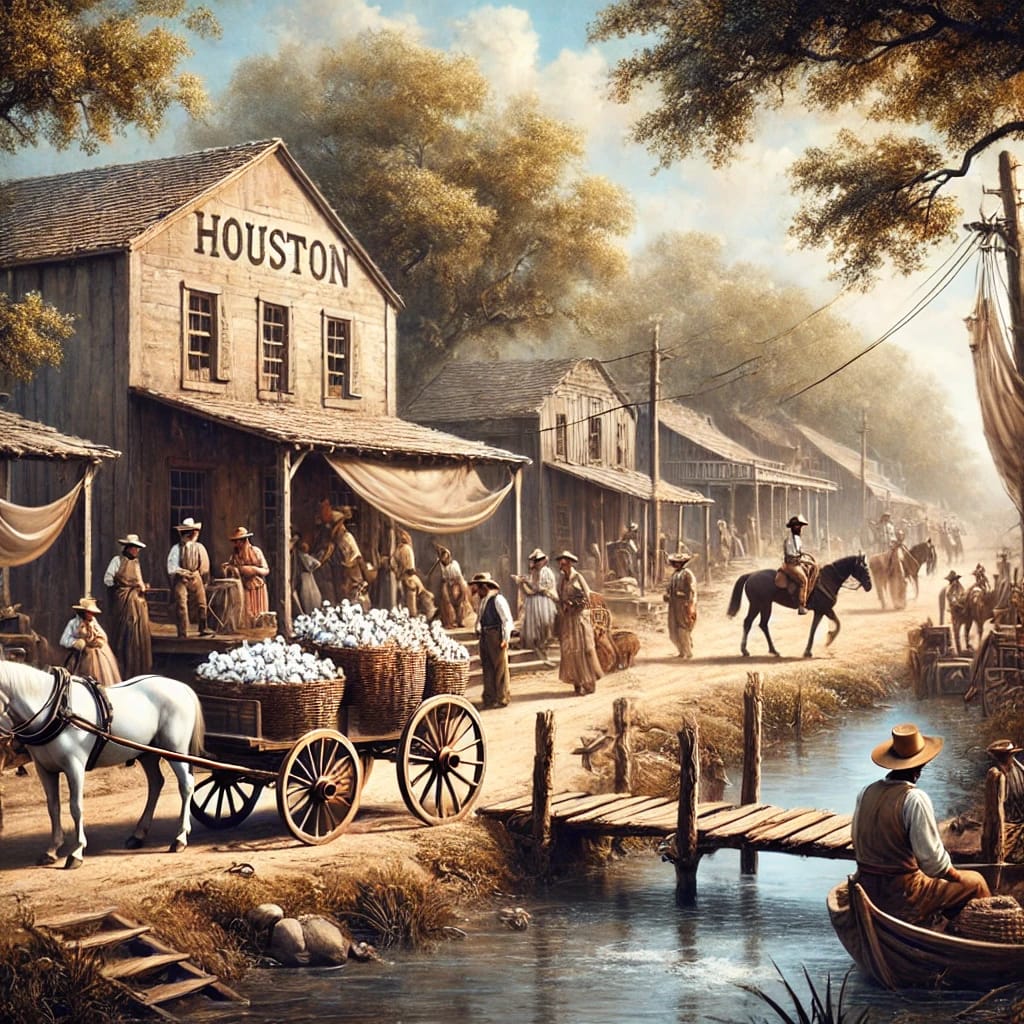
Houston’s journey from a small outpost to a thriving commercial hub began in the early 19th century. With its strategic location along Buffalo Bayou, the city attracted merchants, traders, and settlers, laying the foundation for its economic development. Commerce in Houston’s early days was defined by agriculture, trade routes, and the entrepreneurial spirit of its pioneers.
The Founding of Houston: A Hub for Trade
In 1836, the Allen brothers, Augustus and John, purchased land along Buffalo Bayou with the vision of creating a key trading hub. Their plan was to leverage the natural waterway to transport goods like cotton, timber, and livestock to markets along the Gulf of Mexico. Houston’s accessibility by water made it an ideal location for merchants to set up operations.
By the 1840s, trade between Houston and Galveston flourished, further boosting the local economy. Warehouses and trading posts sprang up along the bayou, providing essential services for farmers and traders moving goods along the Texas frontier.

Agriculture and Livestock: The Backbone of Early Commerce
Agriculture played a vital role in Houston’s economy during the 1800s. Cotton was the primary cash crop, grown on plantations surrounding the city and shipped down the bayou to Galveston for export. Timber from the dense pine forests north of Houston also became a major commodity, supporting the construction industry as the city expanded.
In addition to crops, livestock trading was central to Houston’s growth. Farmers from across Texas drove their cattle to Houston’s markets, making the city an essential link in the supply chain for meat and other animal products.
Early Markets and Trading Posts
Trading posts in Houston acted as multipurpose hubs, offering everything from household goods to agricultural equipment. These early businesses were not only places of commerce but also centers for social interaction, where settlers exchanged news and built relationships.

The First Ward Market, established in the mid-1800s, became a gathering point for local traders. It provided a venue for buying and selling goods, while also helping new settlers access resources they needed to establish farms and homes.
Transportation and the Bayou’s Importance
Buffalo Bayou was Houston’s lifeline during the early years, allowing boats and barges to transport goods efficiently. However, the shallow and narrow nature of the bayou presented challenges. Frequent efforts to dredge and improve the waterway were made to accommodate larger vessels.
By the 1850s, the arrival of steamboats revolutionized trade along the bayou, speeding up the movement of goods and further cementing Houston’s reputation as a commercial center. These early transportation networks laid the groundwork for the city’s future infrastructure development.

Commerce in a Changing Economy
Houston’s commercial landscape evolved throughout the 1800s as the population grew. With the rise of railroads in the late 19th century, the importance of river trade began to shift. The introduction of new trade routes opened Houston to markets across the U.S., allowing it to diversify its economy.
Despite these changes, Houston’s location and entrepreneurial spirit ensured that it remained a vital trade hub. By the end of the 1800s, the city had established itself as a critical player in both regional and national commerce.
Foundations of Modern Houston
Houston’s early days as a trading post were instrumental in shaping its identity as a dynamic economic center. The city’s ability to adapt to changing market conditions and embrace new opportunities ensured its continued growth. From the bustling markets along Buffalo Bayou to the railroads that connected it to the rest of the country, Houston’s commercial foundations remain an integral part of its story.
As modern Houston thrives on international trade and industry, the spirit of commerce from the 1800s lives on in the city’s vibrant business community.